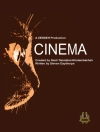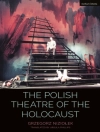In this richly detailed study, James Naremore focuses on the work of film acting, showing what players contribute to movies. Ranging from the earliest short subjects of Charles Chaplin to the contemporary features of Robert De Niro, he develops a useful means of analyzing performance in the age of mechanical reproduction; at the same time, he reveals the ideological implications behind various approaches to acting, and suggests ways that behavior on the screen can be linked to the presentation of self in society.
Naremore’s discussion of such figures as Lillian Gish, Marlene Dietrich, James Cagney, and Cary Grant will interest the specialist and the general reader alike, helping to establish standards and methods for future writing about performers and their craft.
Inhoudsopgave
Acknowledgments
1 Introduction
PART ONE Performance in the Age of Mechanical
Reproduction
2 Protocols
The Performance Frame
What Is Acting?
The Actor and the Audience
3 Rhetoric and Expressive Technique
4 Expressive Coherence and Performance within
Performance
5 Accessories
Expressive Objects
Costume
Makeup
PART TWO Star Performances
6 Lillian Gish in True Heart Susie (1919)
7 Charles Chaplin In The Gold Rush (1925)
8 Marlene Dietrich in Morocco (1930)
9 James Cagney in Angels with Dirty Faces (1938)
10 Katharine Hepburn in Holiday (1938)
11 Marlon Brando In On the Waterfront (1954)
12 Cary Grant in North by Northwest (1959)
PART THREE Film as a Performance Text
13 Rear Window (1954)
14 The King of Comedy (1983)
Selected Bibliography
Index
Over de auteur
James Naremore is director of the film studies program at Indiana University.












